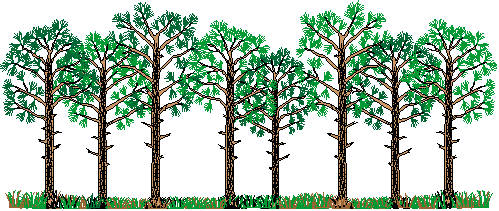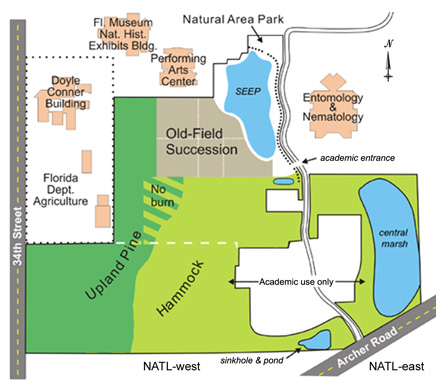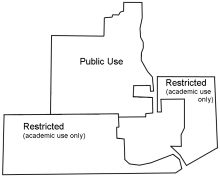
| Nature trails Nature trail flier Rules for using NATL |
Maps of NATL Upland pine ecosystem Vascular plants |
2012 minigrant program About NATL |
The University of Florida Natural Area Teaching Laboratory (NATL) and the Thomas J. Walker Conservation Area is dedicated to teaching students and the public about ecology and biotic diversity. It consists of 60 acres in two contiguous tracts in the southwest corner of campus. The larger tract, known as NATL-west, has 49 acres and is west of Natural Area/Surge Area Drive. The smaller tract, known as NATL-east, has 11 acres and is east of Natural Area/Surge Area Drive. NATL has significant samples of three upland ecosystems characteristic of north peninsular Florida: hammock, upland pine, and old-field succession. It has a variety of wetland habitats, including a 9-acre marsh in NATL-east that drains into a pond and sinkhole in NATL-west and a 3-acre ecologically engineered retention basin (SEEP) in the northeast corner of NATL-west. Click on areas of map below to go to descriptions of each ecosystem and wetland habitat.
Watch this video to learn more about NATL: Video on YouTube.
Learn more about the newest addition to NATL: The NATL QR Trail: Songs of Crickets and Katydids.
 |
 The northern portion of NATL is for public as well as academic use. The rest of NATL is for academic use only. Click on thumbnail to see NATL boundaries superimposed on a 2000 aerial photograph of the area. |
The NATL advisory committee has established Rules for Using NATL and Procedures for Projects in the Restricted Area. These rules and procedures are intended to impose as few restrictions as possible while maintaining the academic functions of NATL and keeping the activities of some users from interfering with the legitimate ones of others.
At least eight departments, in five colleges, use NATL for their courses. Kiosks at the east entrance to NATL-west and in Natural Area Park explain NATL to classes and the public. Four self-guided nature trails, in the northern half of NATL-west, explain significant features of SEEP and the three upland ecosystems, including five stages of old-field succession (see map above).
To help users define locations within NATL, a 50-meter grid has been surveyed and staked. Maps showing the grid for all of NATL are available at the kiosk at the east entrance to NATL-west and here. Maps at a larger scale for NATL-west only are available here. To aid GPS users, the global coordinates of the grid points are listed in a spreadsheet.
With encouragement from IFAS Dean for Academic Programs Larry
J. Connor, a Natural Area Advisory Committee,
with members representing the principal users, was organized in
September 1994. Its charge was to plan the development and management
of NATL.
Additions to NATL
In 1997, NATL was allowed to annex about an acre of the Surge Area immediately north of the mini warehouses. In 2005, as part of the 2005-2015 update of the Campus Master Plan, NATL was expanded to include the 11 acres that became NATL-east and west of Natural Area Drive the boundaries of NATL were redrawn to annex about three more Surge Area acres. For a pictorial summary of the development of NATL, see Principal improvements to NATL: 1994-date.
Managment, maintenance, and funding
When the Natural Area Advisory Committee [NAAC] was formed in September 1994 (see Birth of NATL above), it had no status with UF administration other than an IFAS dean and no official administrative oversight, but in 1996, when NAAC sought to put a fence along NATL's (and UF's) south border, it was discovered by Tigert Hall. The result was that NAAC agreed to be supervised by the Lakes, Vegetation and Landscaping Committee (LVLC), an official UF committee whose responsibilities include making recommendations to UF Administration on the management of natural areas. NAAC would keep LVLC informed of its activities and plans and the Chair of LVLC would become an ex officio member of NAAC. This supervision brought no commitments for support, and the faculty members who founded NATL continued to see to its routine maintenance. For capital improvements to NATL, NAAC sought and received funds from administrators who supported NATL's academic goals.
As NATL developed, its needs for routine support increased. In March 2001, Provost David Colburn approved these policies: (1) The Natural Area Advisory Committee (NAAC), consisting of at least one representative from each department or other unit making significant use of NATL and the Chair of the Lakes, Vegetation and Landscaping Committee, will recommend management plans and seek their implementation. Each fall the Chair of NAAC will send a written report of the Committee's activities for the previous school year to appropriate administrators and will report in person to the Lakes, Vegetation, and Landscaping Committee. (2) NAAC and PPD will work cooperatively to ensure the maintenance of NATL. Each will do those tasks that it can handle most efficiently. The Chair of NAAC will communicate directly with PPD and the Vice President of Administrative Affairs regarding maintenance of NATL. (3) NAAC will ask the Provost for funds to cover its routine operations. Each such request will be accompanied by a report of all NAAC expenditures not previously documented. For major projects, NAAC will also request the Provost's support, but with copies to the Vice President of Administrative Affairs, the Vice President for Agriculture and Natural Resources, and the Deans of the Colleges of Agricultural and Life Sciences, Liberal Arts and Sciences, Engineering, and Education.
NATL incorporates all of two conservation areas, now named NATL-west and NATL-east. NATL's 33-acre restricted area is named the Thomas J. Walker Conservation Area.
![]() Click on thumbnail to see Photo Gallery Menu
Click on thumbnail to see Photo Gallery Menu
![]()
Address comments or suggestions about this Web site to NATL@ufl.edu
To contact the chair of the faculty committee that manages NATL, send email to Jennifer Gillett-Kaufman.